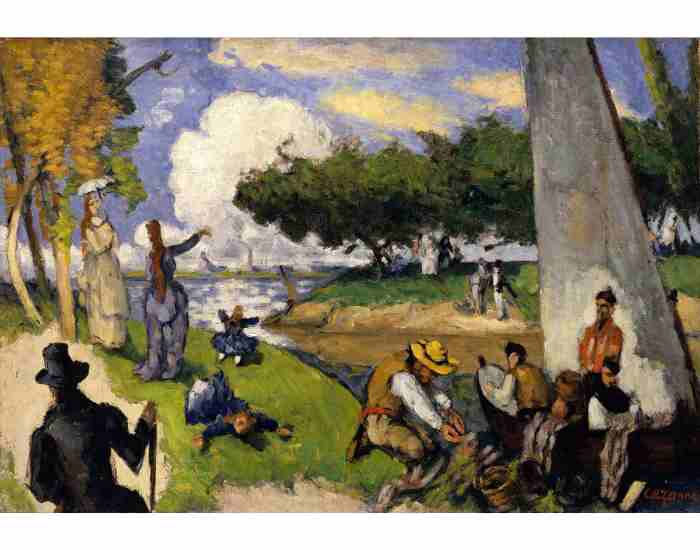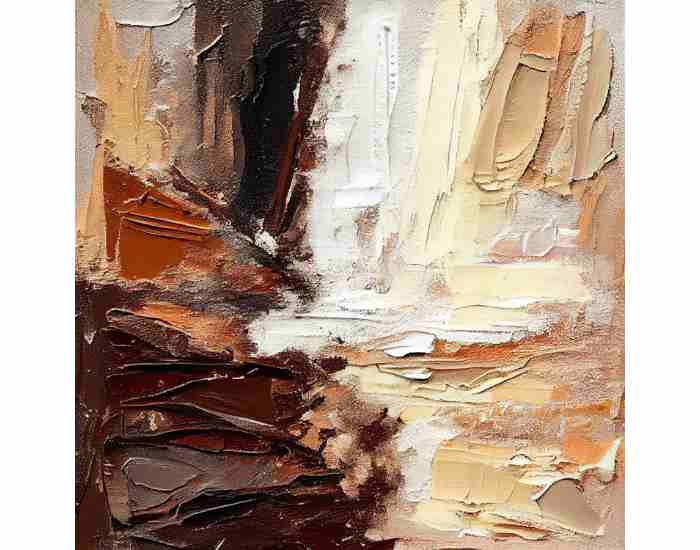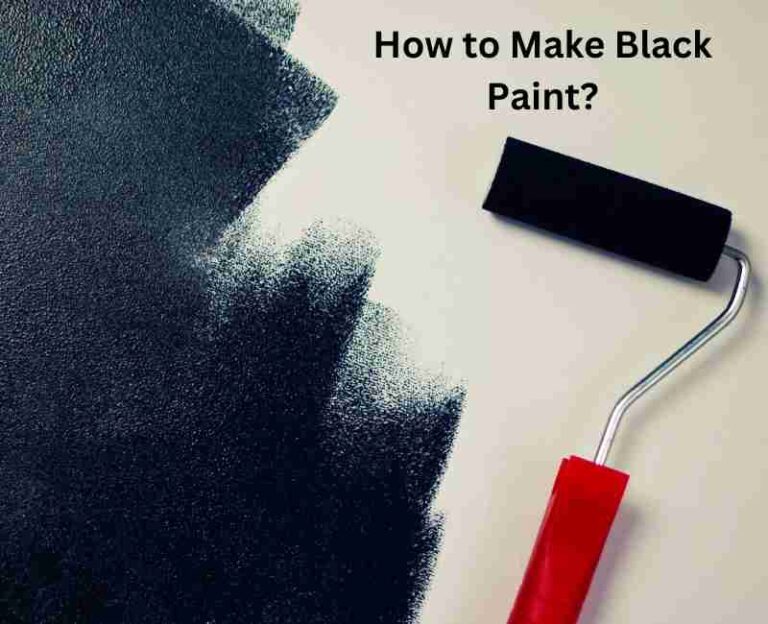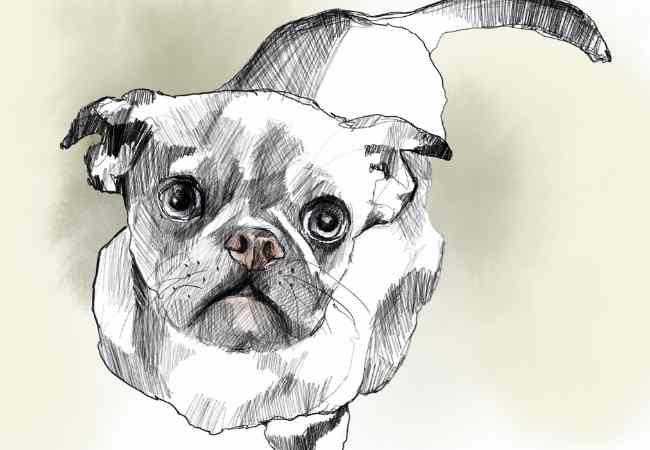Normally, a better and a more intricate way of painting which can be referred to as “working with impasto” is used. With great thickness of paint, I spread it out on the canvas which is also the main principle of this technique. My paints also give my finished painting a textured surface which enables others to feel a sense of depth in my paintings even though they are two dimensional.
To put it shortly, creating art with impasto means treating paint like it is clay and sculpting an object to really bring out the definition of the figure. Therefore, I make shapes and contours with paint rather than paint them in, which gives the finished piece of art a more realistic effect. Rather than scattering the colors with a brush, I assemble the colors together to make them appear more harmonious.
It is impossible to disregard the historical importance of Impasto. The importance of this technique has been used by great artists such as Vincent van gogh who have sought to bring intensity, emotion, and immediacy into their artworks. For instance, Van Gogh’s Starry Night is the result of the impasto technique, where he had thickly swirled paint strokes across the canvas, replicating the movement of the nebulous night sky in more ways than a two dimensional color would. This phrase accurately depicts the emotive dimension of impasto: it does not merely reveal an aesthetics optical but emotional landscape.

Impasto creates form that can help in altering the emotional and intellectual response of a painting’s viewer. The textures created by the raised areas of paint on the canvas respond to light in a variety of ways resulting to the painting appearing to be changing with the variance of the position of light and the time of the day. This complexity of texture, light, and color gives impasto form relief which animates them and makes them an expressive piece within a collection.
The Art and Science Behind the Impasto Technique
Within the category and challenge of creativity and reproduction of artworks one’s existence is where art in its texture meets art in its form. An artist’s mark can be stylized with a palette knives or brushes and then painted onto the canvas as a volumetric mass rather than a surface coating. In that sense, their application is not a mere placing of the color in space but rather a complex interrelationship of multiple planes and the volume the color creates. Each action done with the paint to form an artwork becomes part of it as each layer, each stroke creates form and narrative. In simple terms, the use of the paint is able to elevate an action such as painting an artwork into a textured object.
Oil Paints and Acrylics Not all paintings need to be the same, and impasto does give leeway for some altering. While acrylics may dry a little faster than other types of paint, there are ways where they can be modified into emulating oils. This means that the use of acrylics won’t change the definition of impasto, rather still making it a vision for the artist. This certainly doesn’t mean that oil paints don’t have their own uses, in fact, they enable the artist much more creativity by allowing them to be inexpensive and durable. There is a reason why oil paints were the dominant source when it comes to impasto, regardless of its thickness being a disadvantage.
Historical Roots and Famous Practitioners In addition, this is where famous painters in history contributed to the study of art. However Van Gogh is remembered for using impasto along with various other notable figures, there were many who came before them, and the art style isn’t tied to a single person. The impasto art style itself gained significant rise during the renaissance which subsequently moved towards the times of Van Gogh and then the abstract era. This is why one can argue that impasto is representative to art, as both developed together in this cruel world.
Artists
When discussing the brilliance of impasto, Vincent van Gogh clearly takes the lead with his ability to convey feelings through emotion laden thick brushstrokes while doing his landscapes and portraits. For instance, “Starry Night” cannot be simply categorized as a work of art, It’s a narrative amusing in hue and text about the struggles and aspirations of man. Likewise van Gogh, Rembrandt and many other masters embraced impasto to not only add color depth to their paintings, but to actually carve them out. Five centuries on, and even today caverns are being created and pushed aside, in the hands of painters to evolve what impasto is, proving to everyone that this blend of science and art will forever have a place in every artist’s toolbox.

The Visual Impact of Impasto
Light and texture
The impasto method is characterized by thick application of paint. The analysis of impasto painting techniques Paul Cezanne’s artwork linked between surface and thickness of paint with rich mediums and texture hardware creation and design which created a radical dimension inclusion in this artwork where it operates light differently. Because of these layers being sculpted through the painting, the surface’s flatness is converted to a place where alternating movement of light and shadow interacts. While observing an impasto painting, as light passes over its rough terrain, the sense of touch is engaged. Therefore, this goes beyond simply deepening the space around texture and light; it integrates the feature of aliveness into the two-dimensional work by self-assertively making contact with light, where one structure combined, the structure of elevation and depression of pigments demonstrates the impressive metabolic activity of the work.
Emotional Dimension
Impasto is not simply for show; it also tugs at the heart. The textured quality of the paint draws people in, making them part of the artist’s inner world, and allowing the separation of the viewer from the artist to be erased. With the emphasis in the texture, one sees almost the struggle of the artist’s movements—the extent to which the brush penetrated the canvas, or even the swift stroke of the palette knife. This interaction fosters a great emotional dimension so that it appears that every twist of the brush into new strokes had some significance, making the observer a close audience to the psyche of the artist in action. The texture, therefore, becomes a language of itself, articulating thoughts and sentiments that words might be unable to explain.
Contemporary Use of Impasto
Modern Usage
In the case of today’s artists, things have not been so simple, the impact of impasto has been advancing with the times. Nowadays creators are not just using the impasto technique, but are also detailing new ideas and broadening the scope of textural and spatial opportunities. This modern usage sees impasto not only as a technique of paint application. But rather it becomes one of the core elements of creative articulation. Thus allowing artists to visualize how textural dimensions could alter the texture as well as shape the emotions of the audience.
The scope of impasto paint is further emphasized with the variety of art it motivates. An example would be modern impasto landscape paintings, for here the textural nature of impasto offers an entirely different portrayal of nature. Others, such as abstract pieces, use impasto more as a tool to provide multi-dimensionality which makes all the viewers interact with the piece. On the other hand, impasto portraits, just like stylized paintings, include the deepest emotional strain and bulk of subjects better than flat, smooth studios. They all contribute from the natural world, abstract world or the world of people’s feelings, and they all showcase the tremendous potential of impasto and the fact that this long standing technique of painting had found its stronghold and relevance in modern days art.
The Feeling is Enough Bullet-proof Explanation
Quite Preferably, Focus on the Texture
As a part of so many techniques employed by artists, perhaps the last that deserves mention is the jar of fine impasto. With this technique, once can engage viewers at a more deeper level on further avenues of analysis. The heavy texture is not only about visual element but it bears the brunt of deeper touch and complexity. By means of using thick layers of paint, brush and a palette knife – impasto makes it possible for an artist to tell stories, express emotions and convey philosophy in every stroke. From the harsh protrusions and bumps formed by thick layers of paint, to the lightest of touches by delicate strokes, texture on the canvas in general enables a wide range of surface effects to be explored which begs challenge viewers to relish the painting in multiple ways.
Variations in Methods
The primary instruments or the palette knives and the brushes, become the chisel and the brush of the artist as they sculpt both the images and the physical elements of the work. It incorporates a great deal of untamed creativity texture wise, such as a knife’s edge creating bold textures, or a brush creating finer, softer textures with its bristles. The intricacy is in the received mastery from the artist when he/she manually uses the tools to pile paints in the process forming different amounts of textures that arouse the viewer’s curiosity with a desire to feel or even touch it while looking at it.
Color and light, The Perfect Pairing in impasto
The canvas levels of color and light are literally manipulated through the texture that comes with the impasto technique. This phenomenon creates a motion of shadows and highlights on the paintings which gives them life. Unlike flat paintings, thick paint provides depth in color as well as vibrancy through a different interaction of light, thus creating an engaging image that changes as the viewer does. This phenomenon enhances the artwork visually but also adds to the context of the art since the interplay of light and shadows depicts human emotion and its complexity making the work feel more gripping.
Shadows and Volume
As impasto smoothes the light and shadow of a work, it allows the artist to paint with darker shades, Buildup and three-dimensionality onto artificial surfaces. It is possible to replace an ordinary flat surface with volumetric elements made up of form and line. This kind of volume is not an illusion but a testimony to the vision of the artist to view light as material rather than paint, and as an ingredient that contributes to a desired emotion in the work.
The Physicality of Painting
Artist’s Connection
Addressing the impasto technique also amounts to issues of the effort that an artist puts into it as well as the involitional injustices that the artist inflicts onto the canvas. Every brush stroke every layer that they paint is an unwritten statement between the artist and the painting, each charged with a sense of purpose. Engaging with the medium for instance, the Centre of gravity tremors the thickness of paint and the stroke makes it rain thoughts and feeling directly from the artist to the recipient.
Viewer’s Experience
The visible strokes and textures in impasto work not only attract attention but also invite the viewer to step inside the artist’s universe. Through this sensory experience, the viewer gets an appreciation of the movement and the energy that was involved in every stroke. When the viewer gazes passively at a piece of art, he or she sees the work of art as an object, when the viewer’s gaze is actively responding, he is immersed into the art by what the artist had left behind.
Frequently Asked Questions
What Kind of Paints Are Good For Impasto?
Impasto technique can be effectively achieved by using either oil paints and acrylics as they have a thick and pliable texture. Because oil paints dry very slowly it gives an artist ample time to work on the textures and alter them until he or she is satisfied with them. For acrylics, the occurrence of quicker drying times is beneficial as well as the versatility of adding mediums for altering texture and lengthening working time.
What tools are necessary?
The palette, knife and brushes with a variety of shapes and sizes are the main tools for impasto. The palette knife, on the one hand, makes it easy to apply a large amount of paint and achieve heavy textures, while on the hand, it allows delicate and soft textures to flourish. It adds playful engagement where the impasto techniques can be incorporated with tools which bear some texture effects.
Any tips for beginners?
To get acquainted with the technique and the tools, pick a small task and get it underway.
Overlay paint over itself in different thicknesses to observe how it behaves as well as the way it dries.
Do not shy away from using mediums; sometimes adding a medium gets the job done in smoothing the paint while increasing additional factors.
Follow the works of great artists like Vincent van Gogh known for their impasto technique to gain pertinent knowledge.
Practical Advice
It can be tempting yet terrifying while starting out with impasto painting. Keep the following in mind:
Choosing the Right Canvas: Opt for a sturdy, heavy-weight canvas that will allow several layers of thick paints to be added on.
Experimenting with Different Tools: Go beyond the clichés of palette knives and brushes as well and try using any other tools like credit cards and combs to get a better texture.
Finding the Fine Line:130501 4’s Remark upon the Giclee printing process along with Michelle Anderson 165098 3, would end up exposing the connection held between critical values when it comes to balancing the volume levels dropping versus paint drying on load walls. This equilibrium is essential to achieve the approved surface texture of the artwork without sacrificing its form.
Conclusion
To paint in the impasto style means more than to cover canvas or boards with thick oil or paste; it’s a philosophy that encourages appreciation of touch, feel and wholeness that textured art models. The glory of impasto goes back in history with great personalities and never fails to be reinvented by today’s pioneers giving ample proofs that it can never be outdone and will always be in style.
If you’ve wanted to become a creator in the world of art or are already one, then impasto is one of the many styles worth trying out, one that promises many textures and tones. Visit galleries hunt for impasto paintings and feel their depth and movement or plunge right in and get your hands dirty painting. The process of discovering yourself and expressing your style with the help of impasto technique is never ending and even encourages every individual to create a piece of art that is different from all others and enriches the history of art.
More Post





